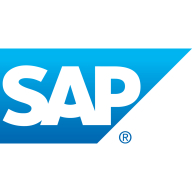

SAP Data Governance and SAP Data Hub are in the data management category. SAP Data Governance has the upper hand in organizations focused on compliance and quality, while SAP Data Hub is stronger in data integration and processing efficiency.
Features: SAP Data Governance enforces data policies, promotes data stewardship, and monitors compliance. SAP Data Hub provides advanced data orchestration, offers integration capabilities, and supports distributed data processing.
Ease of Deployment and Customer Service: SAP Data Governance is known for its structured deployment and reliable customer support, which is advantageous for compliance-focused organizations. SAP Data Hub has scalable, flexible deployment options suited for complex data environments but may require more resources and specialized support for its integrations.
Pricing and ROI: SAP Data Governance typically incurs lower setup costs, benefiting companies aiming to enhance data governance with limited investment. It achieves ROI by reducing compliance risks and improving data quality. SAP Data Hub might involve higher initial expenses but promises substantial ROI from its data analytics, integration, and scalability advantages, particularly for comprehensive data solutions.
| Product | Market Share (%) |
|---|---|
| SAP Data Hub | 1.0% |
| SAP Data Governance | 0.9% |
| Other | 98.1% |
The SAP® Data Hub solution enables sophisticated data operations management. It gives you the capability and flexibility to connect enterprise data and Big Data and gain a deep understanding of data and information processes across sources and systems throughout the distributed landscape. The unified solution provides visibility and control into data opportunities, integrating cloud and on-premise information and driving data agility and business value. Distributed processing power enables greater speed and efficiency.
We monitor all Data Governance reviews to prevent fraudulent reviews and keep review quality high. We do not post reviews by company employees or direct competitors. We validate each review for authenticity via cross-reference with LinkedIn, and personal follow-up with the reviewer when necessary.